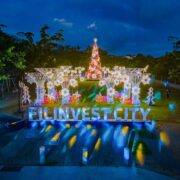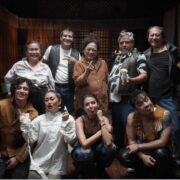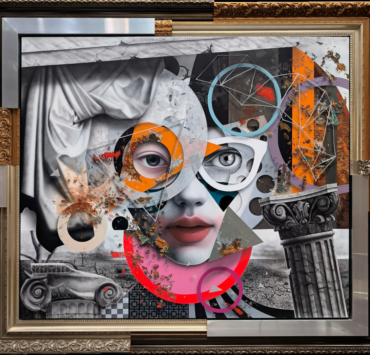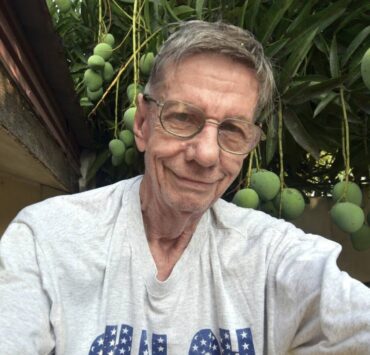Finding God in the garden: A priest’s visual prayer
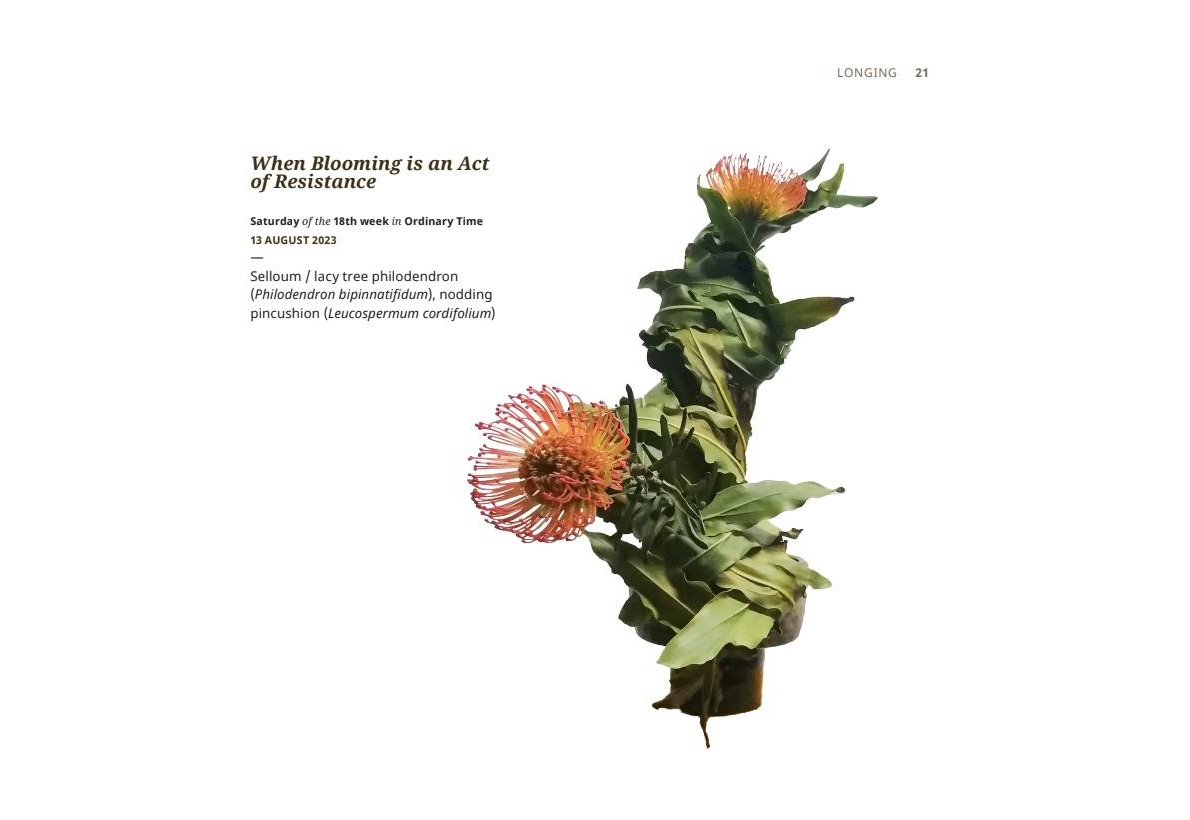
It’s been close to five years since the pandemic and life has gone on for many of us who evolved with the times—staying close to home for those first few harrowing weeks and then cautiously venturing out for a walk around the block or for a quick run to the supermarket for supplies.
This writer remembers hearing someone say that the way we comport ourselves during this time will ultimately reveal what kind of people we are. Will we hunker down and wait out the “storm,” or will we continue with our lives and be more attuned to the needs of others? Basically, will we adapt?
Jesuit priest Fr. Jason Dy found a way to express his creativity even during the lockdowns. When daily “Keep the Faith” Masses began to be streamed online via Radyo Katipunan, Father Dy, who is a lecturer at the Ateneo de Manila University’s Fine Arts department and a practicing artist, saw it as chance to enliven the altar using leaves, flowers, twigs and mosses he found on campus.
“I would get up at 6 (a.m.) at the Jesuit Residence and gather foliage from 6:30 (a.m.) to 7 (a.m.) then head to the Jesuit Communications building where I had 30 minutes to prepare before the Mass started,” he told Lifestyle in an earlier interview.
“As a priest, I was concerned with the pastoral and the spiritual dimensions of the ritual. While as an artist, I was preoccupied with the design, setup and lighting as well as how to enliven the online liturgical celebrations each day,” he said.
He would go on to do this daily—seven days a week—for five years, save for two instances when he was hospitalized due to appendicitis and mild pneumonia.
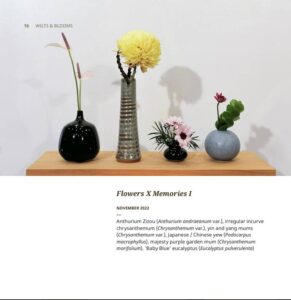
Embracing imperfections
Unlike traditional floral arrangements used in other Catholic churches or chapels, the ones Father Dy made had a sculptural quality to the them. Leaves were twisted or broken, and the flowers sometimes looked bruised. He would arrange these in different kinds of vessels made of glass, clay or ceramic. Those who attended the online Masses at 8 a.m. looked forward to what would appear near the right elbow of the officiating priest. Father Dy took photos of his “floral sculptures” and uploaded them on his Facebook page.
When pandemic restrictions were relaxed, a group of parishioners, the Faith Keeper Flower Ladies, contacted him and began sending weekly deliveries from the flower market in Dangwa, Manila. When they asked if he had any special requests, he told them to choose those that “looked different.” Fast-forward to 2024 when he had to choose a fraction of his floral offerings to be featured in his newly released book, “Wilts & Blooms: Considering Seasons and Times” (Jesuit Communications, 2024). The book cover is a perfect example of his style and aesthetic. It features a solitary red anthurium, a bit misshapen and marred by a hole. Instead of choosing something more evenly shaped and blemish-free, he highlighted its imperfection, tucking it into a dark, rectangular vessel with only a single corn plant leaf as partner, its edges already curling inwards. Father Dy rarely forages for twigs, leaves and flowers on the campus as he now has other sources. The latest development is the recycling of floral arrangements from the Sunday masses at the Asian Institute of Management. “The arrangements are brought to the studio and dismantled and then the flowers and leaves are reclustered according to their kind and variety.”
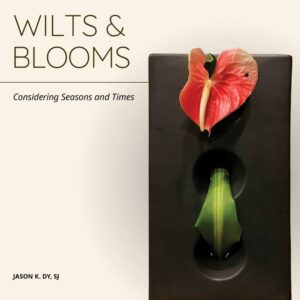
Meditative
Does he miss those mornings when he could roam around an empty campus? “It was a meditative process, walking in the garden as well as observing closely the colors, shapes and lines of the plants and their leaves and flowers. During the pandemic, the pace of life was slow,” Father Dy said.
He may not get to do this as often as before but said there are times he makes an effort. “Depending on the design for that day, I make an extra effort to look for branches with the right curve and desired length, or leaves with specific coloration and shape.”
Father Dy has always had his eye on the natural world. He was the featured artist at the UP Vargas Museum in Diliman several years ago. Aside from a wall styled like an herbarium, there were photographs of him holding leafy branches that obscured his face, panels of his painted leaf “tapestries,” and framed photos of leaves in various states of decay. As the leaves turned brown, they began to look like miniature sculptures.
He took up online classes on ikebana, the Japanese art of floral design, and said he preferred the more modern Sogetsu school of ikebana over the traditional Ikenobo school that was founded by a monk in the 15th century.
For his book, “Wilts & Blooms,” Father Dy categorized the arrangements based on the themes of longing, desire, atonement, regeneration, and presence. He gives titles to all his featured arrangements and indicates the day they were used.
“When Blooming is an Act of Resistance” (Aug. 13, 2023) features two nodding pincushion flowers, their stems tightly bound by philodendron leaves. A row of flowers in different vessels is collectively titled “Flowers x Memories I” and was put together for the November 2022 masses.
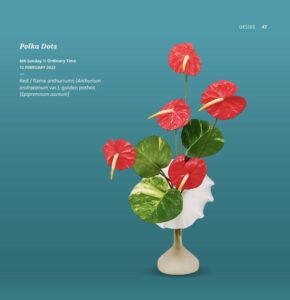
Creative outlets
What is his advice to people who might want to express their creativity but claim they have no outlet?
“Do not limit yourself to popular or recognized creative art forms like visual arts, performative expressions, culinary arts, photography, or floral arrangements. Creativity is not just an outlet of self-expression. It is vital for survival. It means being resourceful in finding solutions to daily problems of life. It is being curious about how things are and not just accepting the way things are,” Father Dy said.
“Cultivating a sense of wonder is creativity,” he added. “Producing something with one’s own hand is a gesture of creating. Learning a new skill is another. Designing a livable and homey space takes a lot of creativity. Through the innate gift of human imagination, you have both the potential and capability of being a creative.
“Creativity, then, is not just relegated to artists, designers, and artisans. It is a human gift. It needs to be cultivated as a way of being and living in the world.”
“Wilts & Blooms: Considering Seasons and Times” by Jason K. Dy, SJ, is available at JesCom, Sonolux Building, Ateneo de Manila University, Loyola Heights, QC. Email jcf@admu.edu.ph; visit jescom.ph.

